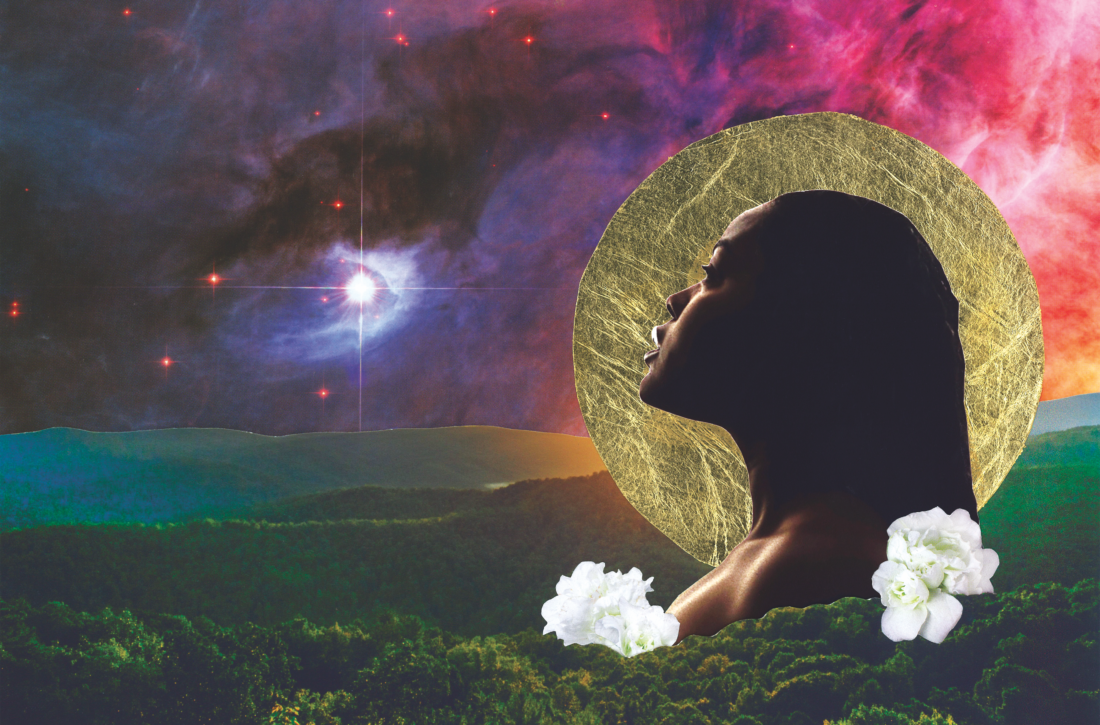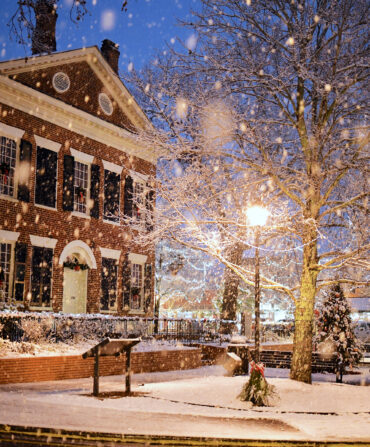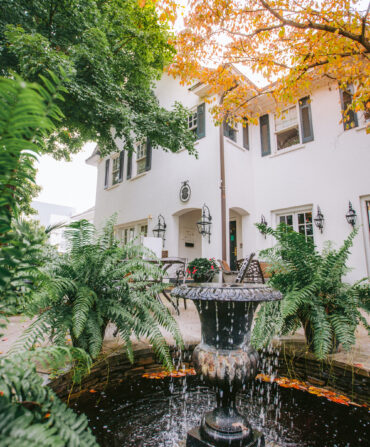I do not remember being afraid of the dark as a child. My father made the night sky seem like a grand adventure with his stories, remnants from his college science classes mixed with lore he picked up from what was then called the Sci-Fi Channel. On evenings when Dad wasn’t working the graveyard shift at the gas station, my little brother, Nicholas, and I would grab blankets and snacks and beg him to take us outside. We would pile into his gold pickup, drive into a clearing in the Blue Ridge foothills in Upstate South Carolina, and stargaze from the bed of the truck. If we remembered, somebody would grab the binoculars my father used at NASCAR races and tilt them to the sky, searching for the planets we could identify. Sometimes we found Venus, or Jupiter. We would giggle as he told us tales—of heroes and dragons, the twelve labors of Hercules, the plight of Andromeda.
Dad saw the celestial map as a book of stories, a choreographed dance of heavenly bodies above our heads. Each yarn was a meditation on creation and destruction, and how the light and the darkness needed each other to function. The stars made us capable of travel, in our minds but also overland. We learned it was their light and positions that helped humans navigate—across seas, or, if you were enslaved as my ancestors were, perhaps toward freedom. When we were children, looking at them gave us a way to calibrate our expectations of our place in the world. We came to understand that the stories told to us, which we would later relay to others, offered a way to try to make sense of what we are unable to fathom.
When we were old enough to go outside by ourselves, my brother and I began braving midwinter temperatures to sit on the top of Dad’s truck and talk while the vehicle was parked in the yard, siblings wondering what we would be when we grew up. We tried to grasp the science we were taught in school—talk of light-years, and infinity. The cosmos made us feel small, interlopers in a situation over which we had little control. At nine and twelve, we had no way of sorting out the true meaning of time, other than recognizing that one day we would run out of it. Some evenings we didn’t say anything.
The night has changed since then. I can no longer see the wonders of our galaxy from my front yard, a predicament that leads me to the Bare Dark Sky Observatory in Burnsville, North Carolina, the first certified International Dark-Sky Association Dark Sky Park in the Southeast. This edge of Yancey County stands as one of the last remaining truly dark patches of sky east of the Mississippi. For thousands of years, when night fell, humans found a way to adapt to it. Now we shape the world to suit our needs, illuminating the darkness with artificial light. But these constantly lit nights, along with a spike in land development across the South, have created light pollution, blocking our ability to appreciate the miracle of lush, deep, inky heavens where the moon and stars guide us to who we are and where we’re going.
Almost two decades since those talks on the truck, I’m searching for that tapestry of stars again, the kind of velvety night that retreated farther into forests with the advent of suburban sprawl and the streetlamps that came with it. The Bare Dark Sky Observatory lies far enough from any city that a clear night brings a stunning display: With the naked eye, we can see more than 9,000 stars. With the observatory’s telescope, the largest one in the region dedicated to public use, that number jumps to 700 million.
After walking around the property, deep in old-growth forest, I watch the sun set over the meadow at the base of the observatory. The land here was not always so beautiful. A major mica-mining operation once flourished in that meadow. A variety of goods use the flaky material, from insulators in electronic equipment to makeup in which it creates a shimmer effect. This region has long provided much of the country’s supply. When the mine closed, it left a large gash in the ground, which the municipality turned into the county dump.
Eventually, when the landfill was capped, an artist cooperative reclaimed the space. Intent on creating something beneficial from the waste, they named their cooperative EnergyXchange and used the methane the landfill emitted to power artist studios, heat ceramic kilns, and support agricultural greenhouses. When the methane ran out, the organization dissolved. Mayland Community College took over the property and renamed it the Mayland Earth to Sky Park. Nestled in the Blue Ridge, the area was known for a good view of the stars, and in 2014, several studies of the night sky confirmed it: Mayland earned its official nod from the International Dark-Sky Association, and later opened the observatory.
Now, several weekends a month, the cosmic curious and astronomy enthusiasts wind their way through Pisgah National Forest to find this place, for unobstructed views of the heavens. Up at the observatory, 2,736 feet above sea level, we watch the stars come out one by one—Vega first; later others, like Polaris—then all of a sudden, all at once.
Our guides for the night, Jeremy Bare and Steve Bruton, call themselves the Milky Way Cowboys. Bare and a volunteer calibrate the observatory’s two outdoor telescopes to focus on nebula clusters while Bruton points out constellations. “Keep looking up,” Bruton shouts from time to time, in between asking the audience trivia questions about astronomy and passing out fun-size Milky Way bars as prizes. Above, the moon is just a sliver—less than 8 percent full. The night is clear and cold, and our little cluster of stargazers do what Bruton says, searching for something, perhaps wondering how to make sense of what we are living through. Amid what we all hope is the twilight of a pandemic, we have made our way to this mountain, asking the night sky to tell us what to make of mysteries, wondering what we will discover in the absence of light. How, as with this park, to build something beautiful out of what was once ugliness. A reminder of who we have the capacity to be.
An alarm on Bare’s phone goes off, alerting us that the International Space Station is passing right over our heads, and we crane our necks skyward, watching the flash of light as it speeds through the night. The six-person crew onboard hail from different countries, but they’ve come together to test their endurance in an environment hostile to life, as we humans navigate our way into new territory, and plan future missions to Mars. Those of us still earthbound marvel at it all—the balls of gas thousands of light-years away, the occasional meteor that winks in the periphery, the humans living above us, at least for a little while.
When I decide to leave, it is almost midnight—my eyes have adjusted to my stygian surroundings, making it easier to
get my bearings. I step outside the observatory, and the ground around me is glittering—mica. Not enough to be worth mining, maybe, but enough to dazzle. White azaleas and irises along my path, planted specifically to reflect the moonlight and starshine, seem to float and glow in the dark.
So much has changed since my childhood communions with the night. My family is smaller, my worries greater—the compass I once used to negotiate my way day-to-day doesn’t track after a discombobulating year that took so much from so many. Some sleepless nights I am unsure of how the world works. There is so much pressure to create my own light, with little thought of the emotional or environmental costs. When it burns out, I’m left fumbling, searching for something to sustain me during life’s pitch-black moments. But here among the stars, I feel a flicker of hope. The uncertainty that seemed overwhelming has retreated to the back of my mind. And that’s worth fighting for—to preserve both these strongholds of darkness and myself. Perhaps if nothing else, I can reflect a little of that light onto another, so that they may feel it, too.








